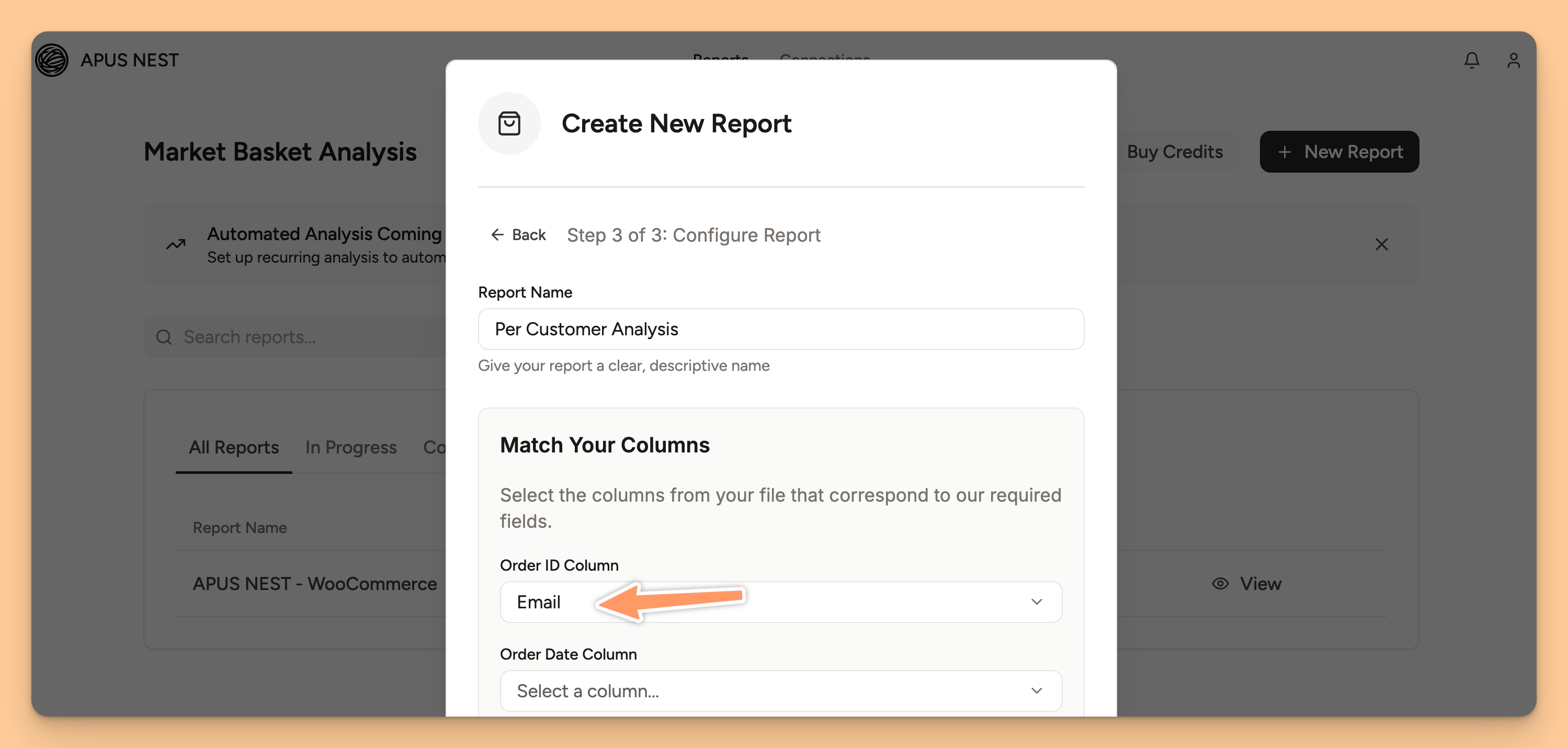In our last conversation, we established a crucial mindset shift: you are the architect of your store's success, and your cross-sell strategy is your masterpiece, not a forgotten feature. The foundation of that masterpiece is understanding what your customers buy together.
But what if I told you that a single, store-wide Market Basket Analysis (MBA) is like looking at your masterpiece with only one eye open? You see the general shape, but you miss the texture, the depth, and the details that make it truly brilliant.
A generic analysis lumps all your customers—brand new and loyal, big spenders and bargain hunters—into one data pot. The results are an average truth, which often hides the most potent, specific opportunities. To truly elevate your strategy, you need to look at your data through different lenses. Each lens reveals a unique customer story and a clear path to revenue.
Here are 5 advanced MBA lenses you can apply to your sales data to go from generic recommendations to surgical, profit-driving strategies.

1. The "First Impression" Lens: Analyze Initial Orders
Why it matters: A customer's first purchase is the most critical interaction you'll have. Your goal isn't just to make one sale; it's to deliver an experience so perfect they are eager to return. Analyzing only the first orders of new customers tells you what products create the best entry point into your brand.
What you'll uncover: You'll find the true "gateway" products and the add-ons that new customers find most compelling. You might discover that first-time buyers of your "Essential French Press" are far more likely to add "Coarse Ground Coffee Beans" than a set of mugs, because their immediate need is the complete coffee-making solution.
How to act on it:
- Create a "First Purchase Perfected" bundle with a small discount.
- Use this pairing in your welcome email series for new subscribers.
- Target lookalike audiences on social media with ads showcasing this perfect initial pairing.
2. The "Loyalty" Lens: Analyze Recurring Customers
Why it matters: Your returning customers have already bought into your brand. The question now is: what deepens their loyalty and increases their lifetime value (LTV)? Analyzing their purchase data separately shows you what products build on an initial purchase and turn a one-time buyer into a lifelong fan.
What you'll uncover: This is where you find patterns of collection, replenishment, and expansion. A customer who first bought the "French Press" might return a month later to buy "Espresso Mugs" and a "Milk Frother." They are expanding their home café setup. This is a fundamentally different buying intent than their first purchase.
How to act on it:
- Design targeted email campaigns for existing customers showcasing these "next step" products.
- Create a "Level Up Your Kit" section on your site for logged-in customers.
- Offer these logical follow-up products as a post-purchase upsell after a customer's second or third order.
3. The "Customer Lifetime" Lens: Analyze Per Customer, Not Per Basket
Why it matters: Sometimes, the most powerful product relationships aren't in the same cart—they're separated by weeks or months. A per-basket analysis will miss this completely. If a customer buys a high-end camera in July and a specific telephoto lens in September, that is a critical connection. Analyzing all orders grouped by customer reveals these long-term journeys.
What you'll uncover: This method is brilliant for high-ticket items or products that are part of a larger system or collection. You'll spot slow-burn affinities, like customers consistently buying a specific brand of printer ink months after purchasing the printer, or collectors buying one piece of a dinnerware set every few months.
How to act on it:
- Set up automated email flows that trigger 30-60 days after the purchase of a "parent" product, suggesting the "child" product.
- Create "Complete the Set" retargeting ads shown exclusively to owners of the initial item.
- Tools like ApusNest can perform this customer-level analysis, saving you from the spreadsheet nightmare of tracking this manually.

4. The "High Roller" Lens: Analyze High-AOV Orders
Why it matters: Not all orders are created equal. Your top 10-20% of orders by value are driven by your most profitable customers. What are these big spenders buying together? Understanding their behavior gives you the blueprint for creating premium experiences and encouraging mid-tier customers to spend more.
What you'll uncover: You'll discover the combinations that create your most lucrative baskets. It might be a "Complete Skincare Regimen" or a "Full Tech WFH Setup." These aren't just one-off items; they are solutions. This data shows you what your most valuable customers perceive as a complete, worthwhile package.
How to act on it:
- Prominently feature these high-value combinations as "Shop the Look" or "Pro-Level Kits" on your homepage.
- Offer a premium bundle with a slight discount to make a high AOV more attainable.
- Use these pairings to define your upselling strategy. When someone adds one key component to their cart, use a pop-up to show them the full "Pro-Level" kit.
5. The "Holiday Rush" Lens: Analyze by Season or Promotion
Why it matters: Customer intent changes drastically during different times of the year. The items bought together during your Black Friday sale are likely different from those bought in the lead-up to Valentine's Day or a random Tuesday in April. Analyzing sales data from specific time windows allows you to optimize for context.
What you'll uncover: You can see which of your products are perceived as "gifts" and what low-cost items are popular "stocking stuffer" add-ons. You might find that during Black Friday, customers buy your "Noise-Cancelling Headphones" along with a "Portable Power Bank"—a practical combo for a deal-seeker. Around Valentine's Day, those same headphones might be paired with a "Luxury Headphone Stand"—a gift-oriented pairing.
How to act on it:
- Plan your next holiday promotion around data-proven bundles.
- Adjust the "You might also like" section on product pages based on the season.
- Run targeted ads featuring seasonal pairings in the weeks leading up to a holiday or event.
From Analyst to Architect
Market Basket Analysis is more than a report; it's a diagnostic tool. By applying these five lenses, you move beyond generic insights and start understanding the specific motivations of your diverse customer segments. You stop shouting one message to everyone and start whispering the perfect suggestion to the right person at the right time.
This is the work of the architect—using the right tool for the right job to build something truly magnificent and profitable.